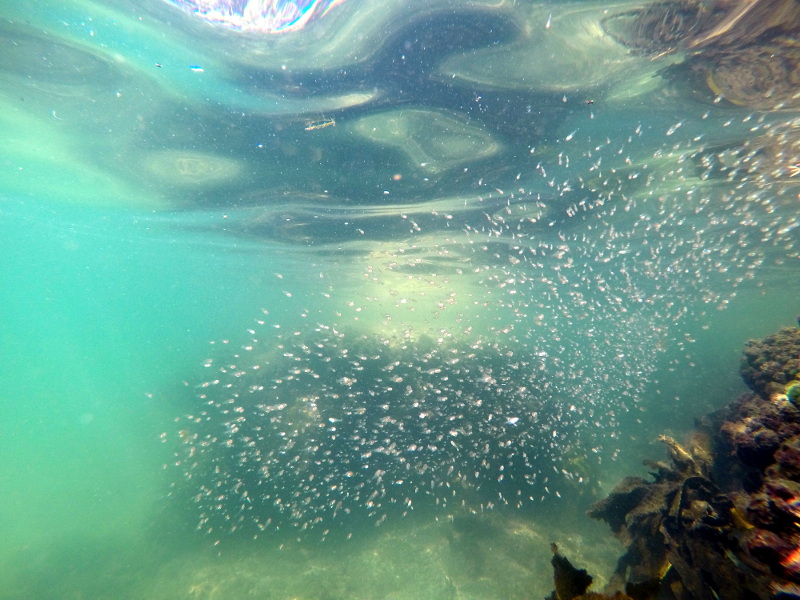Living Data
Conversations/
Index
Disclaimers, Copyrights and Citations
Conversations/Index 2010 2011 2012 2013 2014 2015 2016 2017 2018 2019 2020 2021 2022 2023 2024
Conversations that led to Living Data began in Antarctica.
Underwater life
Chowder Bay, Sydney, Feb 2016.
Photo: William Gladstone
Conversations that led to Living Data began in Antarctica where as veteran expeditioner Jack Ward explains,you can imagine yourself interacting with "a disembodied spirit of tremendous force".
Meeting Jack (in 2007) convinced me that more conversations between scientists and artists are needed for more people to understand and respond to the changes happening in natural systems. Language was Jack's passion. He worked in Antarctica to help establish radio communications at Mawson station and after that was a senior librarian at the State Library in Victoria. He respected the distinction between the poetic ambiguity in the language of the arts and the unambiguous language that is the ideal in science, but understood the power in bringing these together. Jack's own poetic language brings to life what we know from science about the physical force of a katabatic wind.
Conversations that began in the ice continue as scientists and artists explore places closer to home. Conversations take many forms, such as interactive sculpture (above, by Leanne Thompson), motion capture of seagrass choreography (below, with William Gladstone and Jason Benedek), and spontaneous written musings on art and science (below, by Deirdre Cobbin). Simon Pockley's conversations with Anthony Larkumsuggest that we may also have conversations with our selves, between our scientific and artistic natures that use completely different parts of our brain. Anthony reflects on the creative process in science, of developing a new hypothesis:
It's almost an inspirational process, where it comes out of left field. It's not a logical process at all... we're just at a stage at the moment where we're trying to understand how quantum physics contributes to photosynthesis. We don't know yet, the way it's going to come out, but it seems to be very exciting...
Anthony's involvement in the Living Data program began in 2012. The following year he identified it as,
an interaction between art and science. It's re-interpreting that in a completely different way, and I think, quite possibly, it then re-introduces that into science. I think that's the exciting part of it, that interaction between these two what seem to be completely distant and almost antagonistic aspects of human nature.













